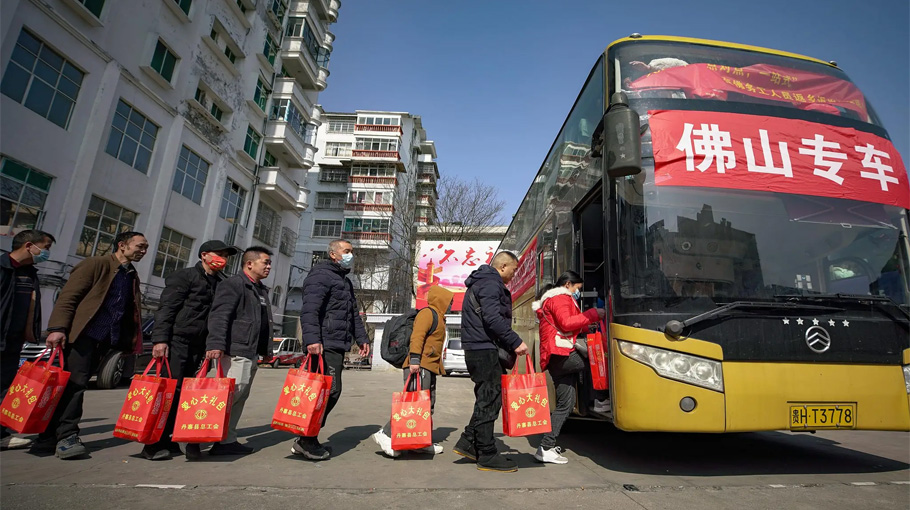Balancing China’s labour migration through education

The 2020 Chinese census highlighted a 69.7 per cent upswing in domestic migrant numbers, compared to 2010 data. Notwithstanding the challenges associated with substantial population influxes, some propose that the Chinese government should refrain from curtailing large-scale labour migration. The hypothesis underlying this perspective is that unfettered labour mobility would catalyse the convergence of regional economies, thereby reducing the need for internal labour migration. But this analysis lacks holistic insight.
The evolving landscape of China’s migrant worker demographics reflects noteworthy shifts in employment sectors and educational attainment. Specifically, 41.9 per cent of the newer generation of migrant workers (born after 1980) are engaged in the manufacturing sector, a notable increase from the preceding generation’s 25.5 per cent. Conversely, the construction sector, which attracted 28.9 per cent of older generation migrants (born before 1980), accommodates merely 10.6 per cent of this new migrant cohort.
This new cohort of migrants are also better educated. Those born in the 1980s and 1990s have received 1.13 and 0.84 more years of education respectively, when compared to the generation born in the 1940s. This paradigm shift not only signifies enhanced educational standards but also intimates an insidious sidelining of under-skilled labourers from urban economic vibrancy. While skilled migrants find alignment with the dynamism of urban environments, their lesser-skilled counterparts often grapple with barriers to urban welfare and amenities. In severe scenarios, these low-skilled migrants face eviction from metropolitan centres.
Over time, such bifurcation in labour demographics could exacerbate regional economic disparities. For example, Romania witnessed an annual increase of approximately 0.6 per cent in regional economic divergences from 1995 to 2015 due to migration’s composition effects. Technological proliferation in metropolitan areas amplified demand for skilled labour, reducing opportunities for under-skilled workers.
If skilled labour migrates from underdeveloped regions, the subsequent depletion in human capital in those areas might negate the advantages of a bolstered capital-to-labour ratio and stymie growth. The dearth of skilled labour in these regions might further deter the growth of high-tech industries, given that regional labour composition influences the technological decisions of firms. Over 66 per cent of changes in skill availability due to migration are counterbalanced by inter-firm factor intensity modifications.
Maintaining consistent relative wages, this insinuates that adaptive production methodologies are pivotal in counteracting labour influx perturbations, potentially widening the economic chasm between cities.
Yongjie Xiong is a researcher at the Central University of Finance and Economics, China.
East Asia Forum


